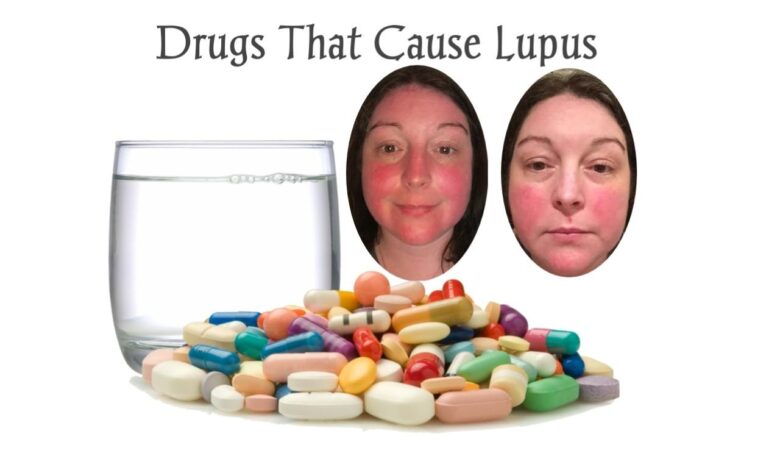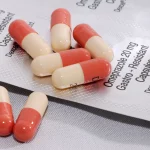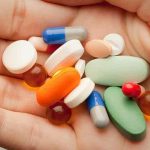What Are The 38 Drugs That Cause Drug-Induced Lupus?

What is drug-induced lupus?
Drug-induced lupus is described as an autoimmune phenomenon where a drug exposure leads to the development of systemic lupus erythematosus (SLE) like clinical features. DIL is a clear example of an environmental trigger leading to the development of lupus in a genetically susceptible individual.
Hydralazine was the first agent to be associated with the development of lupus-like symptoms in 1954. Since then, more than 100 drugs have been identified as the cause of drug-induced lupus, with the list expanding with the development of newer biologic agents each year. DIL tends to be less severe than SLE, with symptoms usually resolving after discontinuation of the offending agent.

What are the differences between drug-induced lupus and systemic lupus erythematosus?
Patients with DIL usually experience mild or few lupus-like symptoms initially. These symptoms include fever, malaise, weight loss, arthritis, arthralgia and myalgia. Symptoms generally worsen the longer the patient is maintained on the suspect medicine. Some symptoms such as malar or discoid rash, photosensitivity, oral ulcers, hair loss and renal or neurological disorders are common in SLE, but are uncommon in DIL.
The latent period between starting the medicine and first symptoms appearing ranges from one month to more than 10 years.
Certain types of antinuclear antibodies, such as anti-histone antibodies, can help to confirm a diagnosis of DIL. Although these autoantibodies are also common in SLE, patients with SLE usually have additional autoantibodies such as antibodies against double stranded DNA. Therefore, when a diagnosis of SLE or DIL cannot be clearly distinguished on clinical grounds, the presence of double stranded DNA antibodies should be considered as evidence against a diagnosis of DIL.
What are the drugs that can cause drug-induced lupus?
The most common medicines known to cause drug-induced lupus erythematosus are:
- Isoniazid
- Hydralazine
- Procainamide
- Tumor-necrosis factor (TNF) alpha inhibitors (such as etanercept, infliximab and adalimumab)
- Minocycline
- Quinidine
Other less common drugs may also cause the condition. These may include:
- Anti-seizure medicines
- Capoten
- Chlorpromazine
- Methyldopa
- Sulfasalazine
- Levamisole, typically as a contaminant of cocaine
Cancer immunotherapy drugs such as pembrolizumab can also cause a variety of autoimmune reactions including drug-induced lupus.
Examples of drugs reported in association with DIL and their risk levels
| Medicine | Risk |
| Procainamide* | High |
| Hydralazine | High |
| Quinidine* | Moderate |
| Isoniazid | Low |
| Minocycline | Low |
| Methyldopa | Low |
| Chlorpromazine | Low |
| TNFα inhibitors (eg, adalimumab) | Low/very low |
| Mesalazine | Very low |
Symptoms of drug-induced lupus tend to occur after taking the drug for at least 3 to 6 months. Drug-induced lupus is also more common in men because they are given these drugs more often; however, not everyone who takes these drugs will develop the disease.
What are the symptoms of drug-induced lupus?
Specific criteria for diagnosing drug-induced lupus have not been formally established. However, symptoms often overlap with those of systemic lupus erythematosus (SLE). These include:
- muscle and joint pain sometimes with swelling
- flu-like symptoms of fatigue and fever
- serositis (inflammation around the lungs or heart that causes pain or discomfort)
- certain laboratory test abnormalities
While the symptoms of drug-induced lupus are similar to those of systemic lupus, only rarely will any major organs be affected.
How quickly does drug-induced lupus develop?
It usually takes several months or even years of continuous therapy with the medication before symptoms appear. For people treated for one to two years at currently used doses of the high-risk drugs, approximately 5% of those taking hydralazine and 20% of those taking procainamide will develop drug-induced lupus. With most of the other drugs, the risk is less than 1% and usually less than 0.1% of those taking the medication will develop drug-induced lupus.
How long will drug-induced lupus continue?
Drug-induced lupus erythematosus resolves within days to months after withdrawal of the culprit drug in a patient with no underlying immune system dysfunction. DILE can arise months to years after exposure to drugs prescribed to treat various medical conditions (eg, antihypertensives, antibiotics, anticonvulsants).
In general lupus-like symptoms usually disappear within six months after these medications are stopped.





